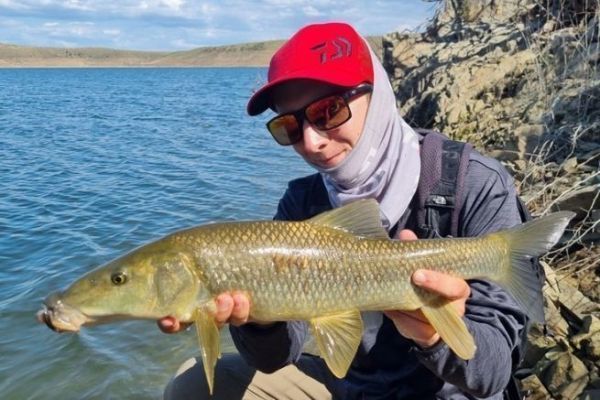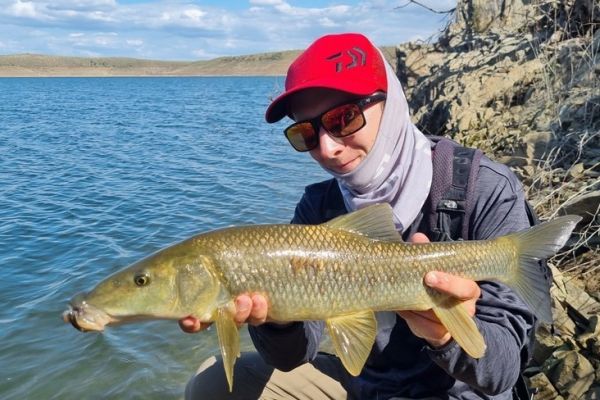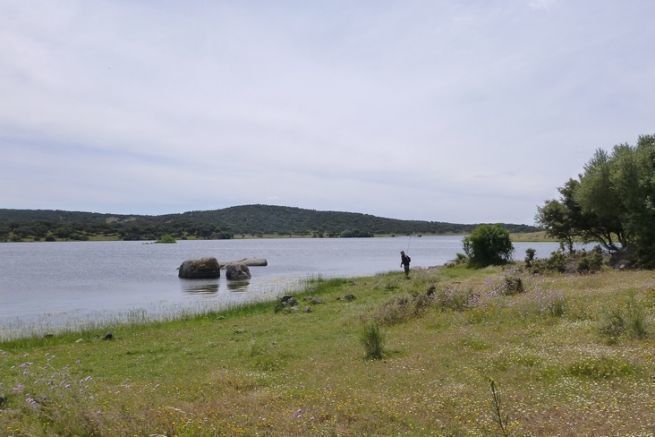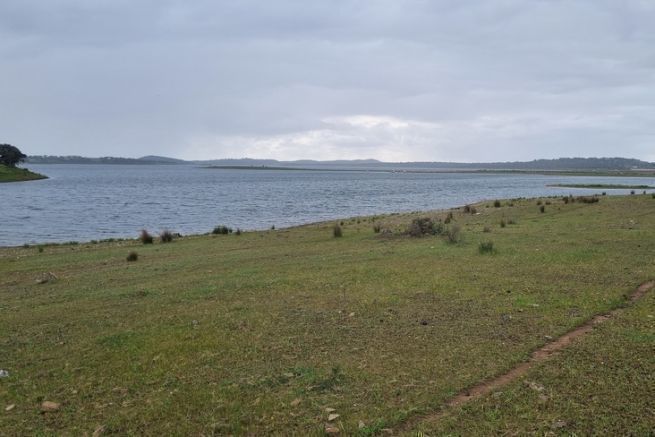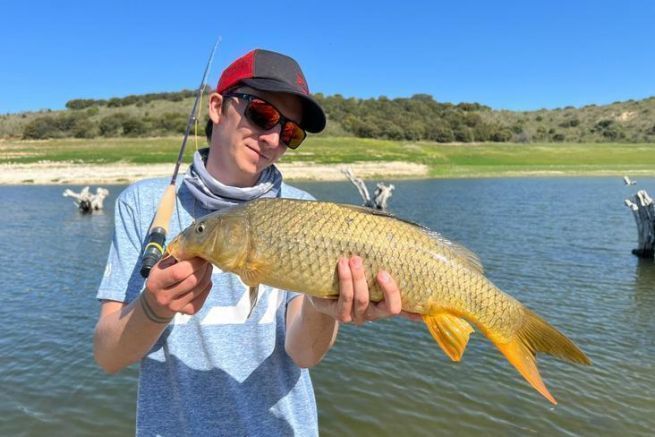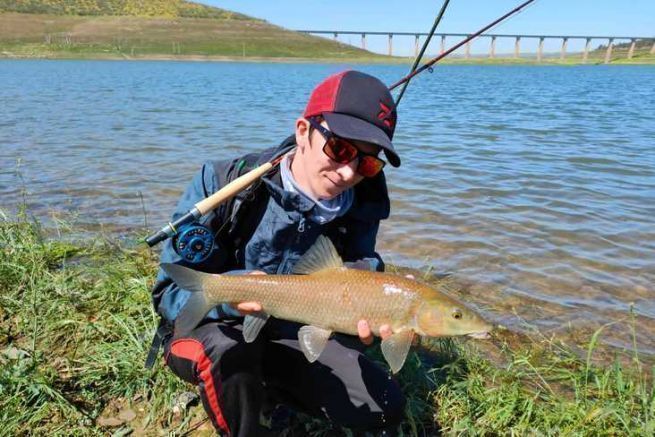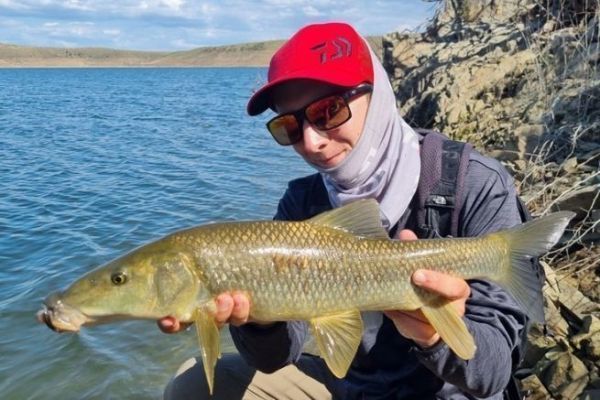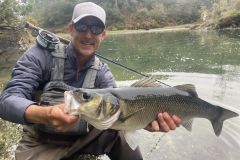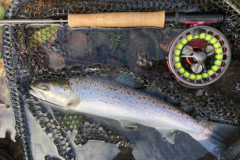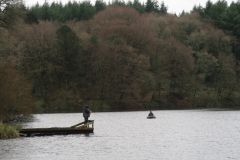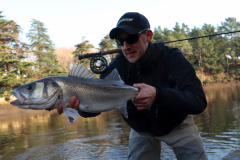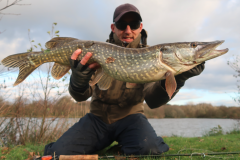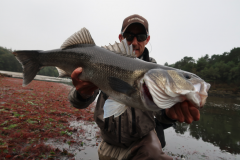The beetle
The beetle is a very easy to make and very strong dry fly pattern. We generally use highly buoyant foam to make the carapace, which allows it to float in waves and after fights.
To dry-fish barbel in Spain, you need a fly large enough to make a noise as it falls into the water to attract the fish's attention. Generally speaking, a landing close to the fish triggers the fish's reflex to seize it. To avoid missing the fly, it must be relatively large so that the fish can easily spot it even in dirty water. A small dubbing body and a few legs to increase realism on a 12 or 14 hook and you're done!
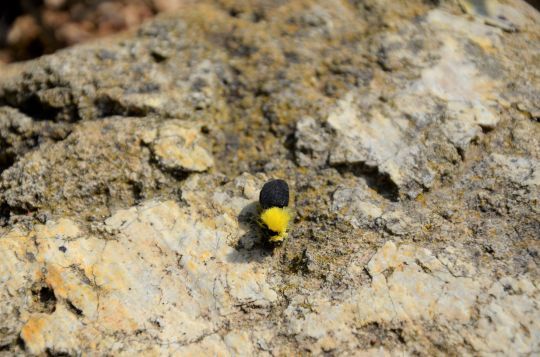
The marabou streamer
The marabou streamer is a must for Iberian barbel fishing. Depending on the activity and the depth of the fish, we can vary the weight of the lead ball to suit the conditions. The most effective colors are olive green and brown, but black can stand out in very dirty water. The color of the bead can be a good asset to keep your streamer in sight when fishing long distances.
It can also be used when the wind picks up, much more easily than a dry fly which would tend to drift. As for the shape, you can choose to imitate a small crayfish by creating two legs towards the rear, or rather the simplicity of a classic streamer. The ideal hook size is 10 or 12, depending on the brand.
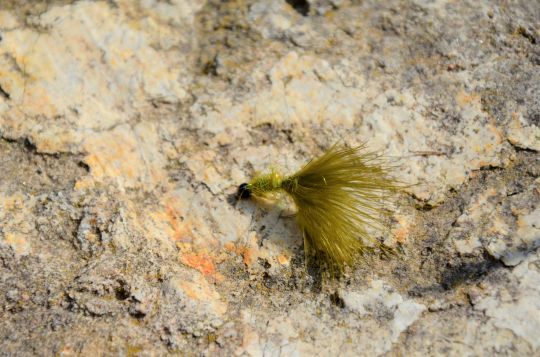
Ant imitation
Different species of ants, ranging from the microscopic to the giant, inhabit the shores of Extremadura's lakes. There is a very short period of the year when millions of aludes, the winged ants, will emerge from their hiding places and inevitably fall into the water. At this precise moment, the barbels feed exclusively on them and don't want to eat any other prey. It's a very rare phenomenon that I've unfortunately never had the opportunity to encounter. The few people I know who have had the opportunity to encounter this phenomenon say they could never have imagined that so many barbels could be present at the same time on an edge.
Although these hatchings are rare, the ant imitation is a pattern that is viable in most conditions, although the weak buoyancy of this fly is not optimal, especially after one or two fish. The ant is mounted on a 14, 16 or 18 hook, depending on the size of the insects on the water.

 /
/ 